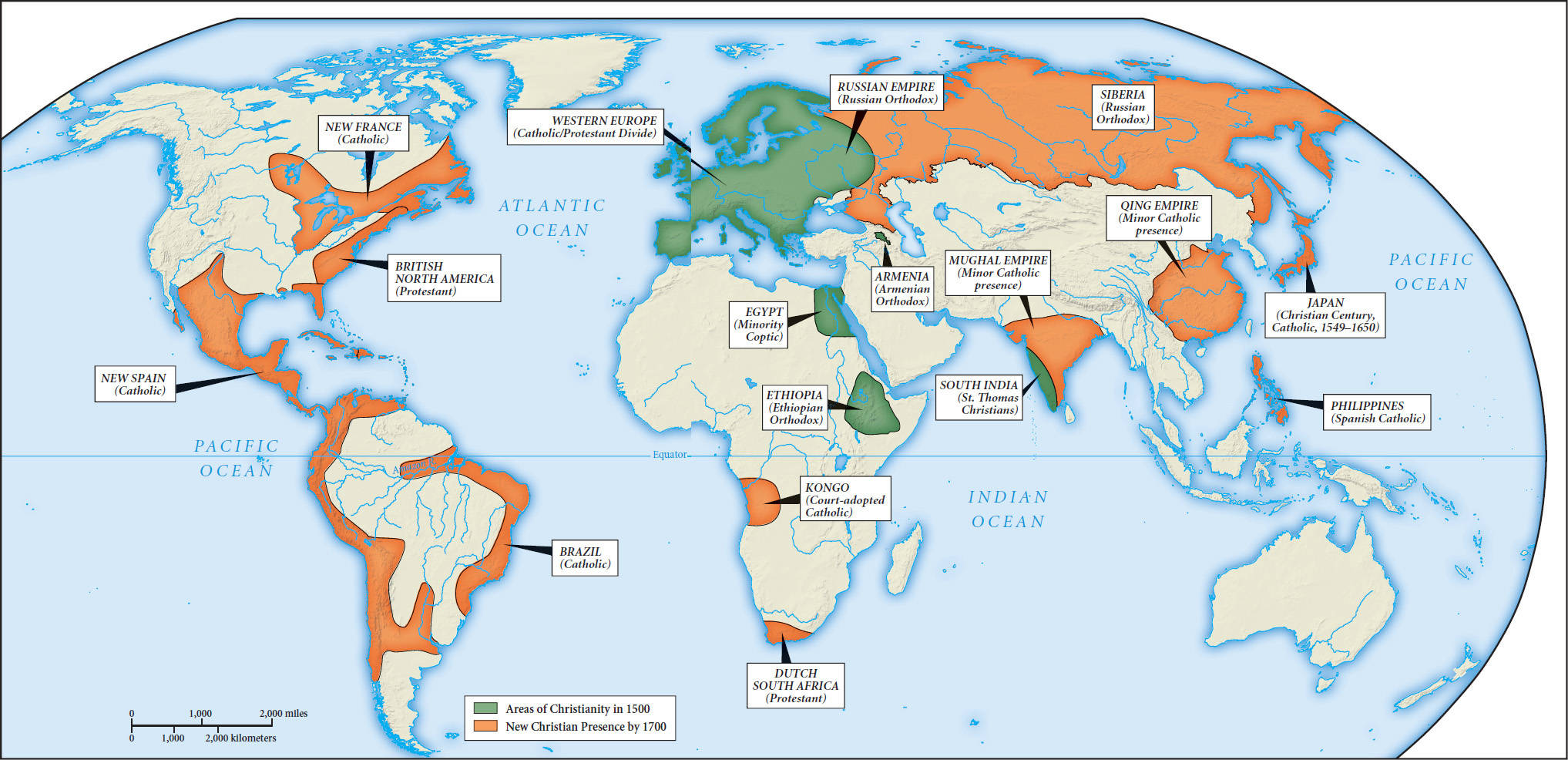Christianity Outward Bound
Connection
Question
How was European imperial expansion related to the spread of Christianity?
[Answer Question]
Christianity motivated European political and economic expansion and also benefited from it. The resolutely Catholic Spanish and Portuguese both viewed their movement overseas as a continuation of a long crusading tradition, which only recently had completed the liberation of their countries from Muslim control. When Vasco da Gama’s small fleet landed in India in 1498, local authorities understandably asked, “What brought you hither?” The reply: they had come “in search of Christians and of spices.”3 Likewise, Columbus, upon arriving in the Americas, expressed the no doubt sincere hope that the people “might become Christians,” even as he promised his Spanish patrons an abundant harvest of gold, spice, cotton, aloe wood, and slaves.4 Neither man sensed any contradiction or hypocrisy in this blending of religious and material concerns.
If religion drove and justified European ventures abroad, it is difficult to imagine the globalization of Christianity (see Map 15.2) without the support of empire. Colonial settlers and traders, of course, brought their faith with them and sought to replicate it in their newly conquered homelands. New England Puritans, for example, planted a distinctive Protestant version of Christianity in North America, with an emphasis on education, moral purity, personal conversion, civic responsibility, and little tolerance for competing expressions of the faith. They did not show much interest in converting native peoples but sought rather to push them out of their ancestral territories. It was missionaries, mostly Catholic, who actively spread the Christian message beyond European communities. Organized in missionary orders such as the Dominicans, Franciscans, and Jesuits, Portuguese missionaries took the lead in Africa and Asia, while Spanish and French missionaries were most prominent in the Americas. Missionaries of the Russian Orthodox Church likewise accompanied the expansion of the Russian Empire across Siberia, where priests and monks ministered to Russian settlers and trappers, who often donated their first sable furs to a church or monastery.

Missionaries had their greatest success in Spanish America and in the Philippines, areas that shared two critical elements beyond their colonization by Spain. Most important, perhaps, was an overwhelming European presence, experienced variously as military conquest, colonial settlement, missionary activity, forced labor, social disruption, and disease. Surely it must have seemed as if the old gods had been bested and that any possible future lay with the powerful religion of the European invaders. A second common factor was the absence of a literate world religion in these two regions. Throughout the modern era, peoples solidly rooted in Confucian, Buddhist, Hindu, or Islamic traditions proved far more resistant to the Christian message than those who practiced more localized, small-scale, orally based religions.